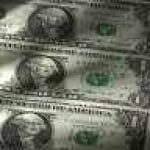 Japan can’t seem to catch a break. In February, they notched their 20th straight monthly trade deficit. Like America, Japan now imports more than it exports. In other words, as a country, Japan grows poorer each month.
Japan can’t seem to catch a break. In February, they notched their 20th straight monthly trade deficit. Like America, Japan now imports more than it exports. In other words, as a country, Japan grows poorer each month.
This, alas, was not supposed to happen. In particular, this wasn’t supposed to happen on Prime Minister Shinzo Abe’s watch. Not with his policies of Abenomics promoting exports.
If you recall, Abe’s implemented extremely loose monetary policy since taking control of the Japan’s high office in December 2012. More exactly, he’s pursued aggressive monetary easing (i.e. money printing) and a weak yen. It was his firm belief these economic policies, referred to as “Abenomics”, would boost exports and pull Japan’s economy out of a two decade slump.
Abe’s big blunder, like many political fellows, was he didn’t care to appreciate that the world is not a static place. It’s dynamic. If you push one thing down…another thing must pop up.
What we mean is these types of financial shenanigans never quite play out as intended. Sometimes they bring about distortions, malinvestments, and destructive financial bubbles in unexpected and unwanted places. Other times the sought after benefit is offset by an opposite detriment.
One Crisis from Disaster
A weak yen has certainly been a pleasing benefit for Japanese exporters. “Weakness in the yen since late 2012 has been a boon for exports, which are significant part of the Japanese economy, exemplified in Toyota Motor Corporation, the world’s top automaker,” reports AP.
“But a weak yen also increases the costs of imports.
“Resource-poor Japan relies heavily on imported oil and natural gas. Those costs have surged following the March 2011 nuclear crisis in Fukushima, which has led to all 48 of the nation’s working reactors going off line.”
Obviously, the rising cost of energy imports was not a factor Abe bargained for when he went all in with Abenomics. On top of that, Japan is one crisis away from disaster. The Country’s gross debt is more than 240 percent of GDP.
Growing their way out of their massive debt burden seems highly unlikely. Increasing taxes to pay down the debt will surely stall economic growth. That’s why Abe went for the politically expedient means of inflating the currency…unfortunately he miscalculated.
Abe thought he was being clever. He posited devaluing the currency would inflate the debt away and boost exports. He overlooked the possibility of a weakening currency manifesting its frailty in rising energy costs.
What Is Really Backing the Dollar
Japan’s increases in exports from selling Toyotas abroad were offset by rising oil and gas import prices. Similarly, Abe’s cleverness was offset by his vanity. Though, when it comes to managing a nation’s currency, Abe’s flaws are hardly unique.
Fed Chair Janet Yellen completed her first Federal Open Market Committee hearing since taking over from Ben Bernanke on Wednesday. Yellen, like Abe and Bernanke, thinks she knows just what the economy needs…more money. Yellen, however, must do the dirty work of cleaning up Bernanke’s mess. She must taper the rate of new money creation.
Wednesday’s FOMC statement noted the Fed would now create $55 billion per month of money from nothing rather than $65 billion. Yellen also vowed to keep the federal funds rate at practically zero “for a considerable time after” the money creation program ends.
But when asked what the Fed meant by “considerable time” a cat seemed to have gotten her tongue…
“I — I, you know, this is the kind of term it’s hard to define, but, you know, it probably means something on the order of around six months or that type of thing,” stammered Yellen. “But, you know, it depends — what the statement is saying is it depends what conditions are like.”
This response provided the lucid edification we’ve always longed for from a Fed Chair.
For we’ve always found the conventional assertion that the dollar’s backed by the full faith and credit of the U.S. government to be rather inadequate and insincere. Now, thanks to Yellen’s slipup, we finally know what the dollar’s really backed by…
Nothing but a bunch of hot air.
Sincerely,
MN Gordon
for Economic Prism
Return from What Is Really Backing the Dollar to Economic Prism





Pingback: Forecasting for Dummies
Pingback: This Market’s Ready to Implode